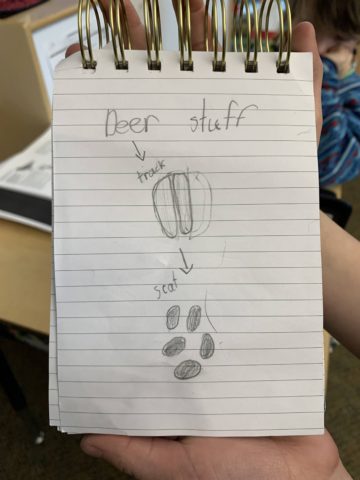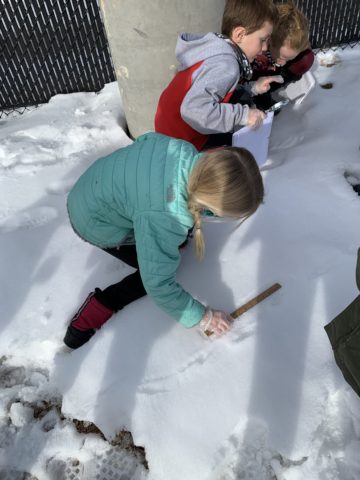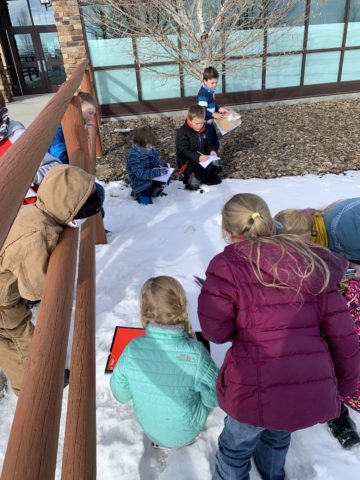What was your driving question?
Grades Involved
What PBE principles were highlighted in this project?
Project Description
It all started with a picture of a footprint that the teacher brought into the classroom to spark discussion among students and gather existing knowledge. Students had many different ideas of what the footprint came from, but there wasn’t enough information for them to accurately figure out what animal made the footprint or how to identify it in the first place. This catalyzed the decision to bring in a fish and game biologist to teach the students about what animals might be found in their schoolyard, and how to tell the difference between them based on their tracks and other information. The students then planned and implemented their own investigation to decipher the numerous animal tracks in their schoolyard. Students looked at animal evidence, journaled about their observations, collected scat in plastic bags, and recorded drawings and measurements of their findings. After looking at all the evidence they collected, they created a community field guide for the Pinedale elementary school to educate and inspire other students about tracking animals. This lesson will be repeated again in subsequent years to build off the field guide to update and add new knowledge.

How did this project connect to your local or regional community?
How did this positively impact the community? How was it shared?
Reflection: What was the biggest challenge? What was the most rewarding aspect of this project?
Students were so excited about the project that they wanted to go home, share it, and repeat it. The mystery and curiosity about their place sparked by the project made it one of the most successful and talked about lessons among the students.
Any advice for a teacher or student that is implementing a PBE project for the first time?
“I love place-based education, I think it’s so powerful” – Jenna Harvey



